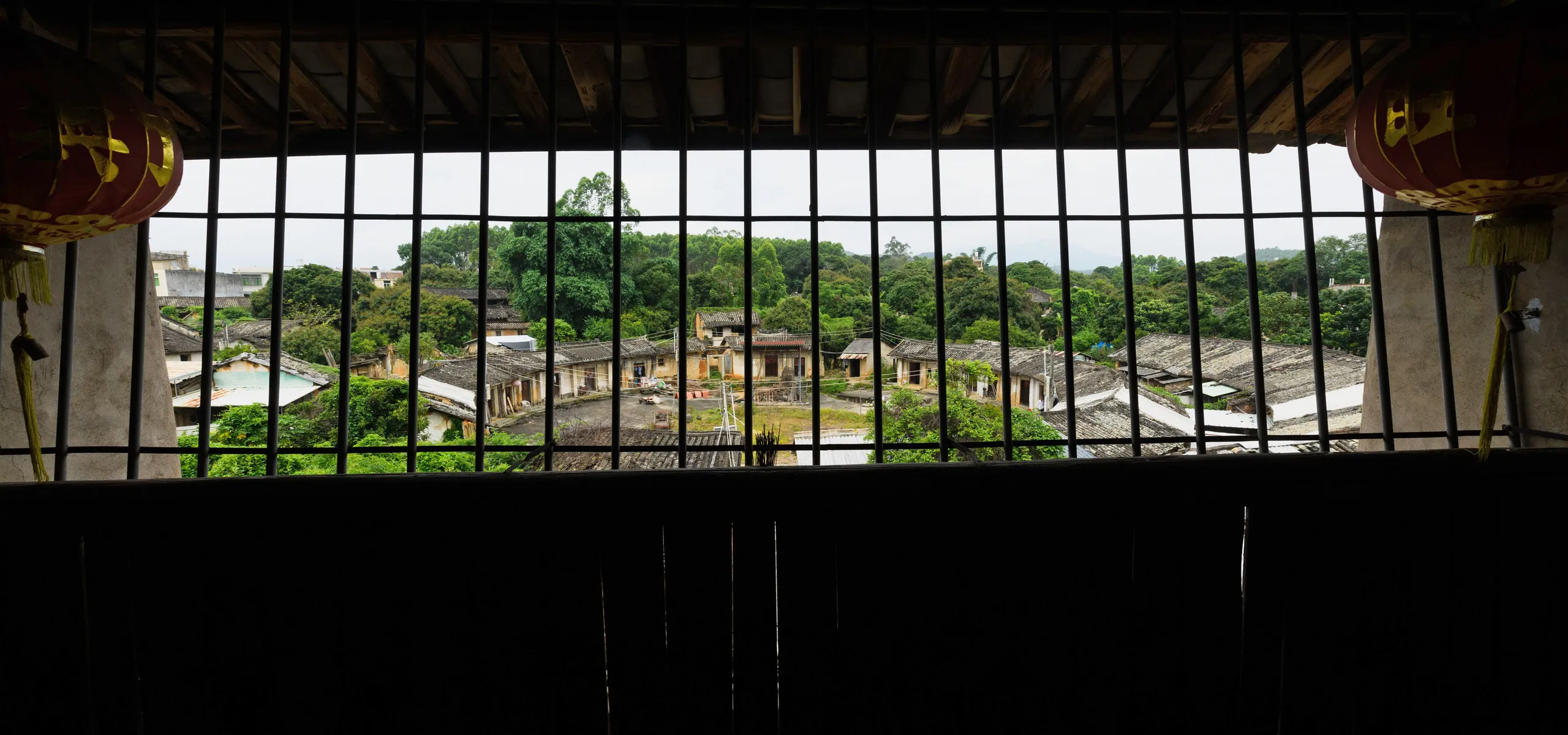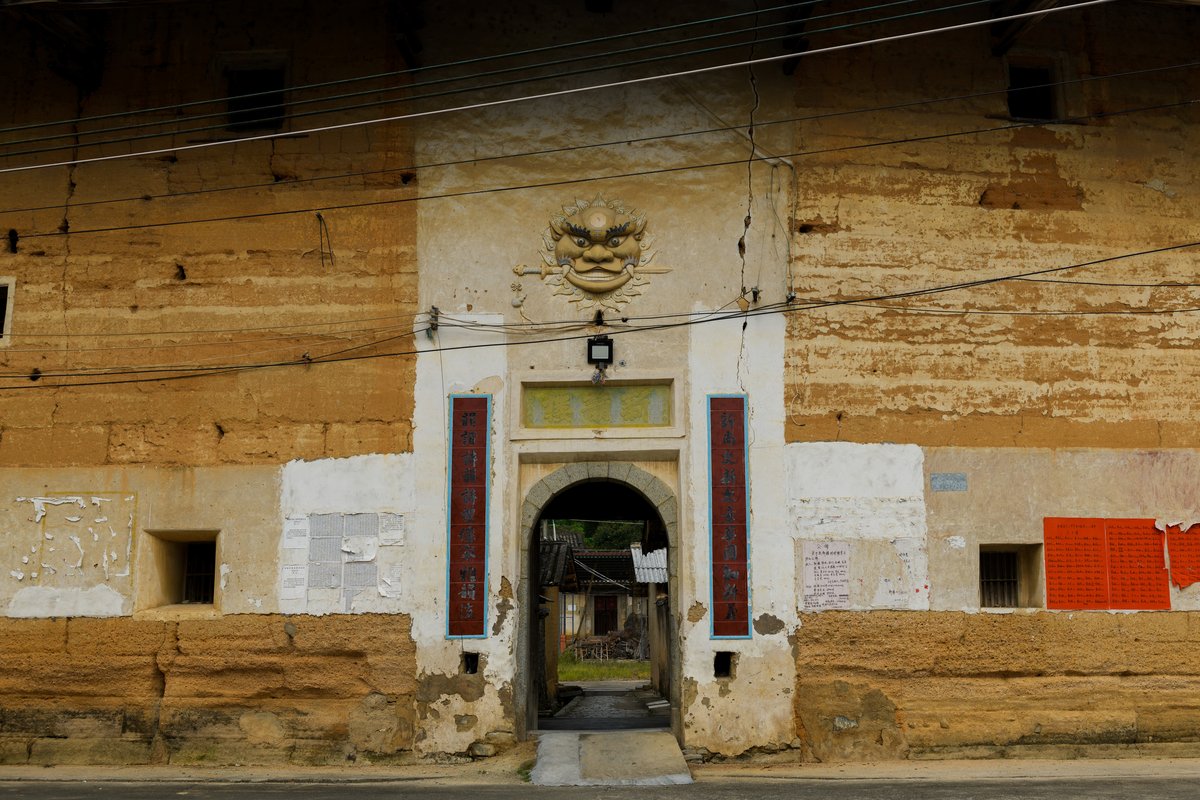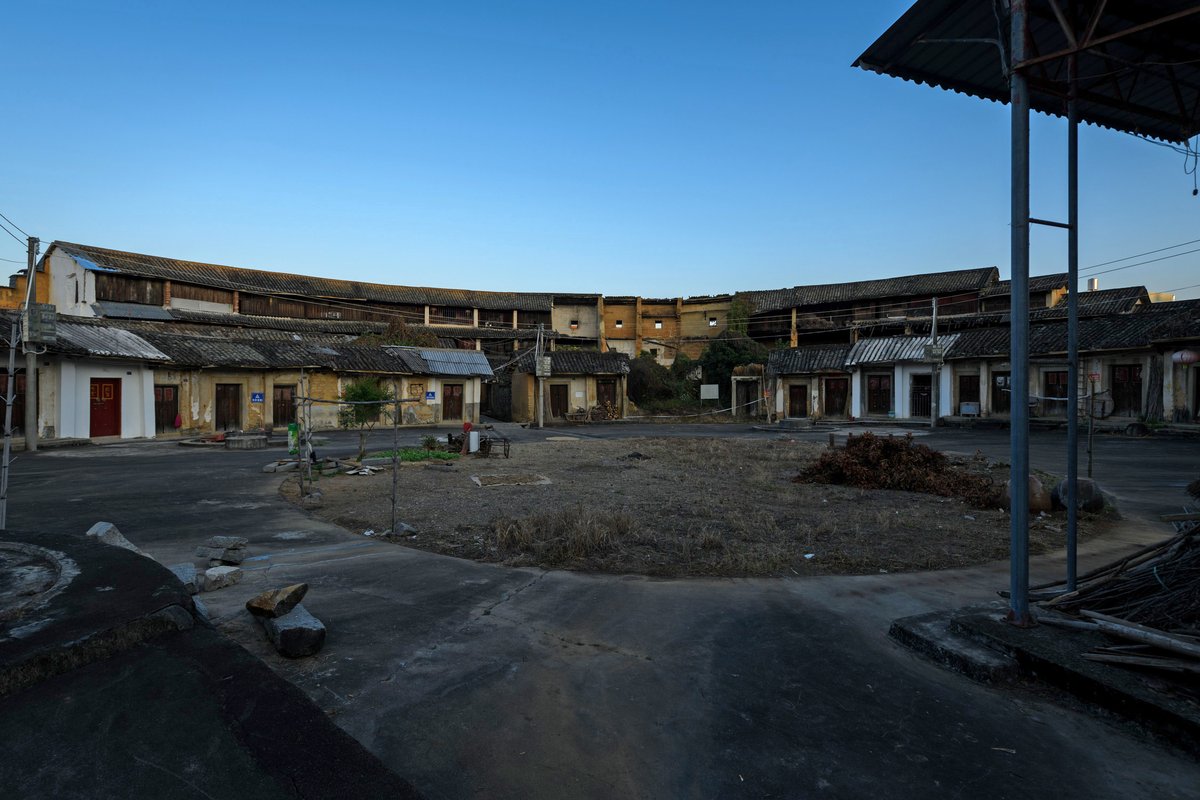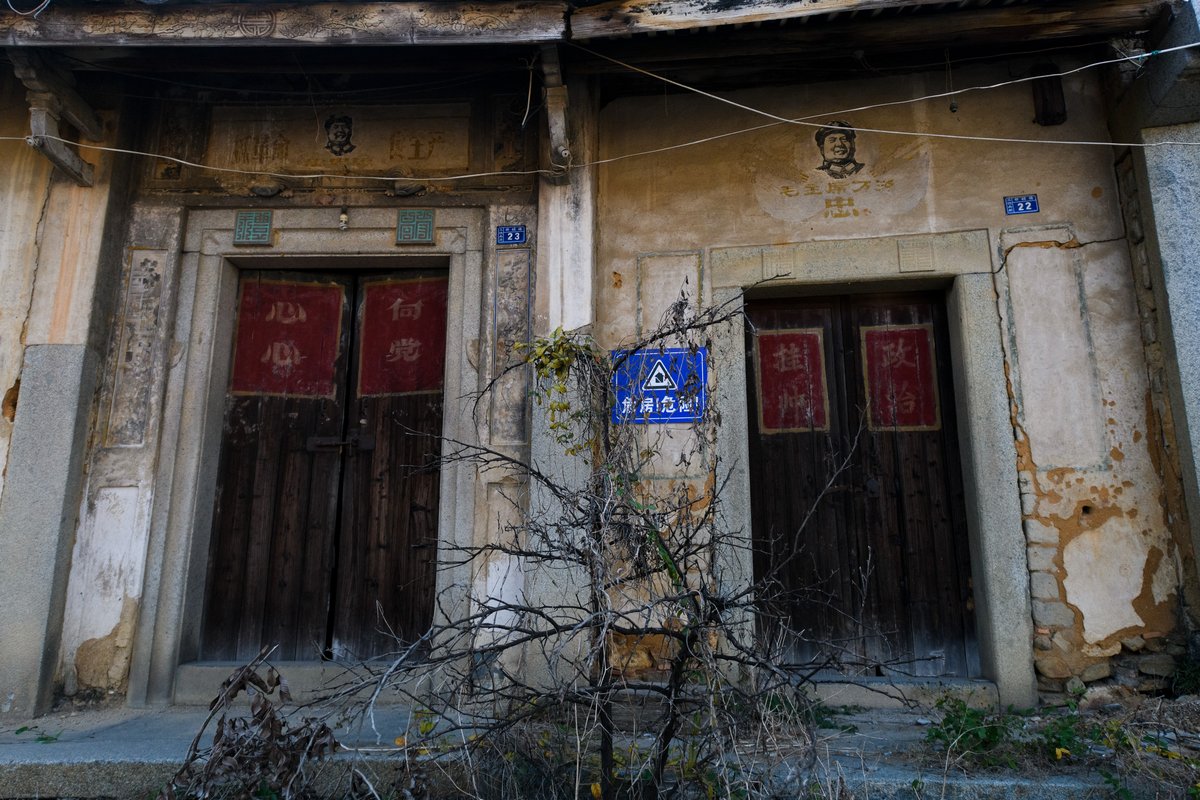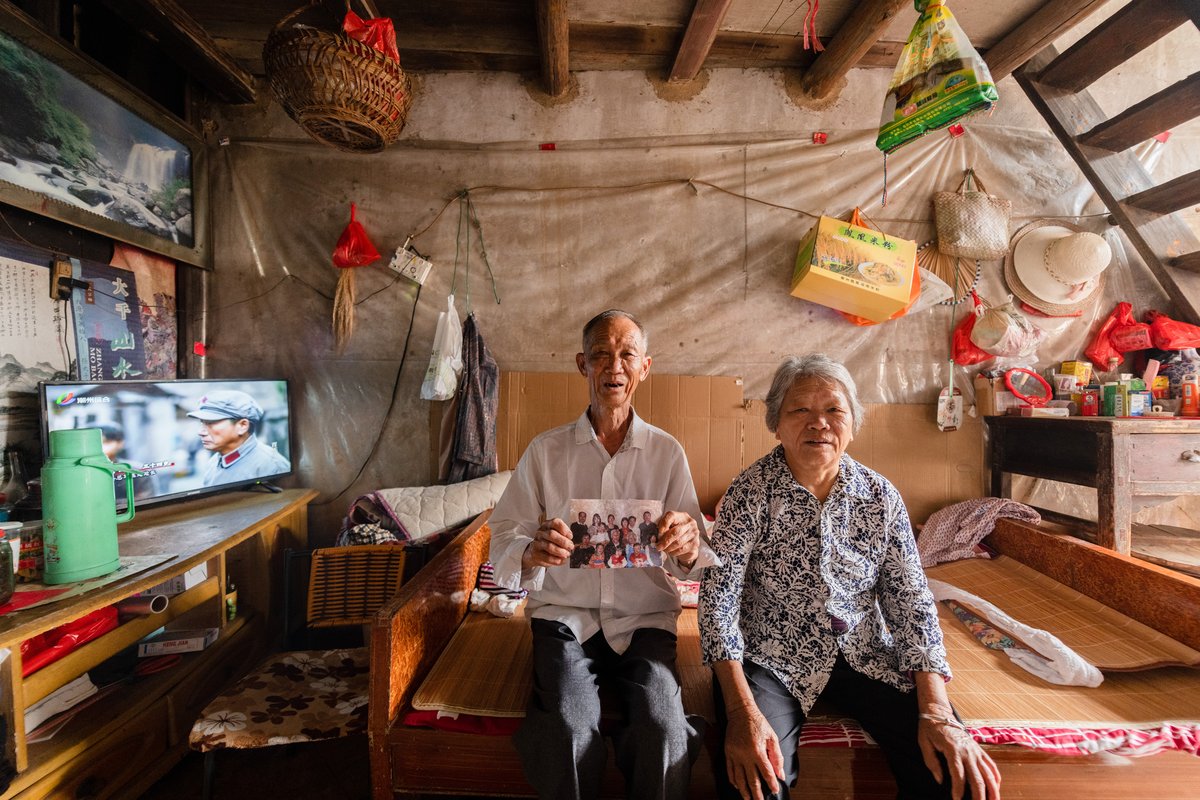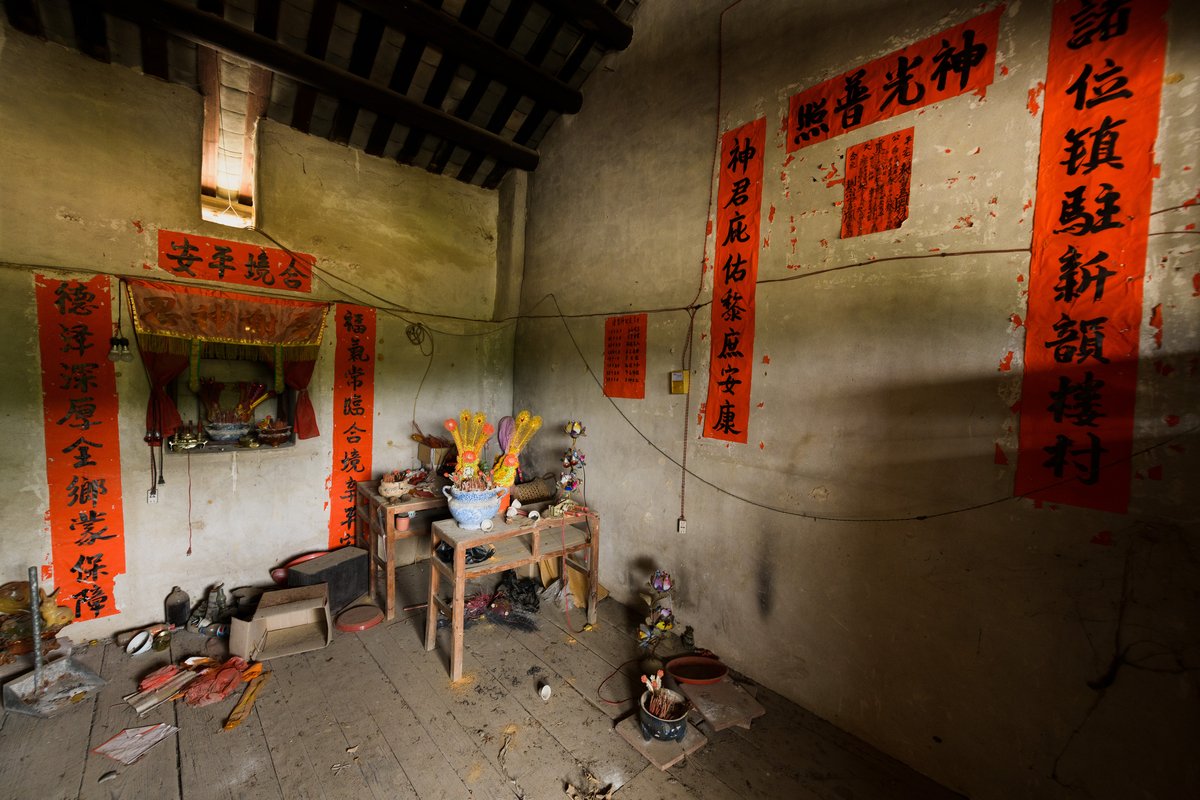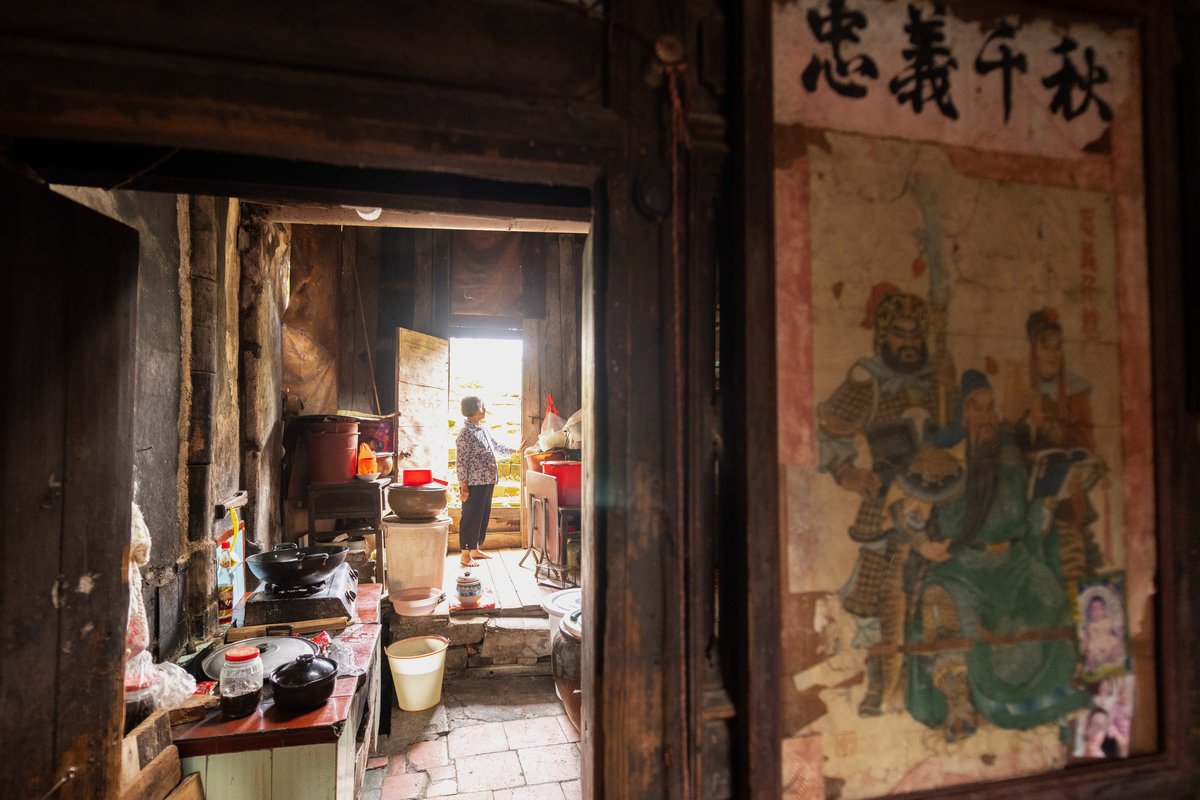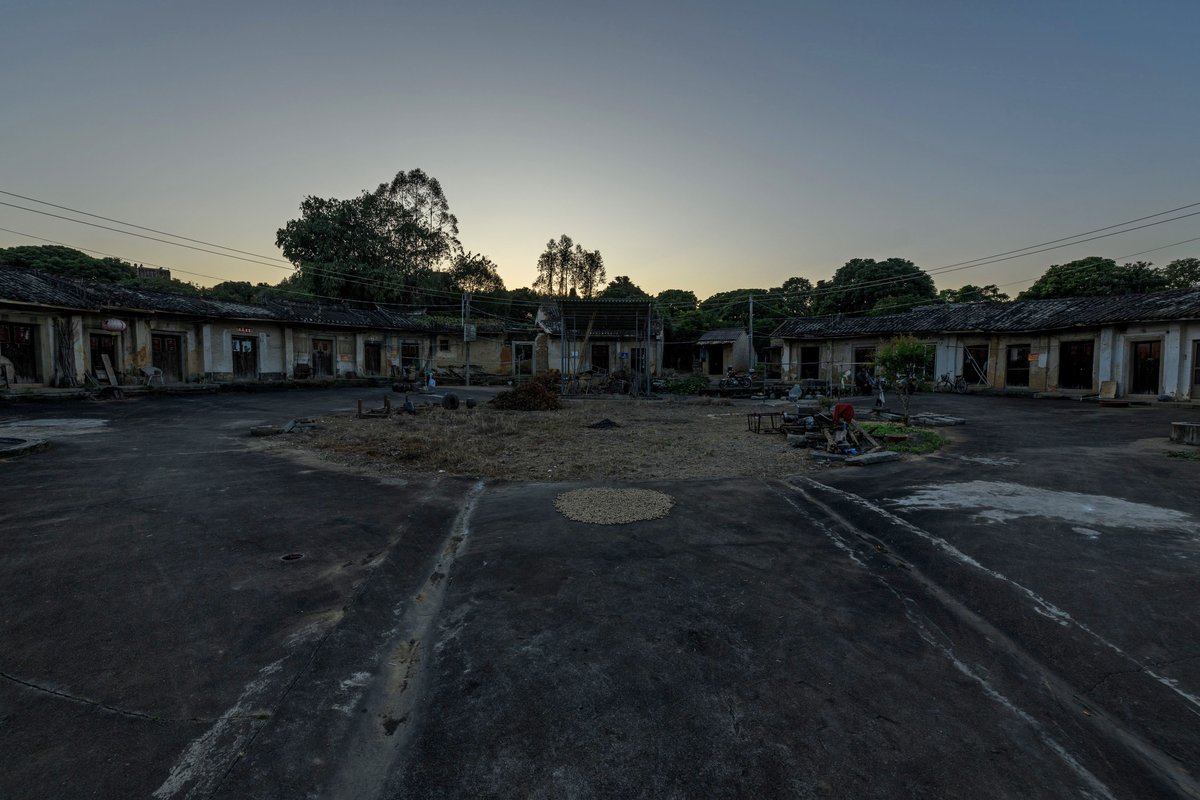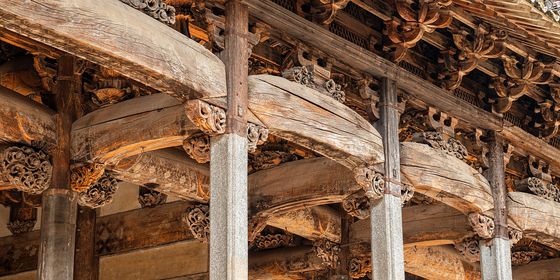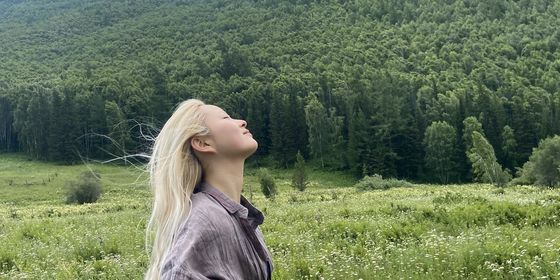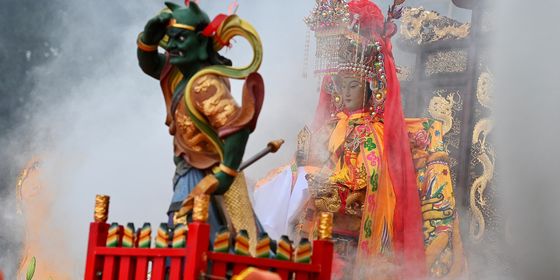Life in Guangdong’s ancient, neglected, and crumbling “Earth Buildings”
On a sunny afternoon, 83-year-old Huang Jichang takes out a worn slip of paper from his room, points to a paragraph and, without removing the cheap cigarette he’s smoking from his mouth, reads it to me: “Xinyunlou was built in the year of Jiachen, in the period of Emperor Yongzheng, Qing dynasty.”
That was 1724, exactly 300 years ago, and Huang Jichang is one of the last people living in this earthy yellow building. A three-story circular structure about 100 meters in diameter, Xinyunlou is a typical tulou (土楼, “earth building”), a fortified type of residence traditionally built by the Hakka community and others in southeastern China.
About 400 years ago, their ancestors fled here to escape wars in the North and began building homes using materials they could obtain from nature: including stone, clay, and wood. The circular structures were subdivided into units that housed hundreds of people and enclosed a courtyard for communal activities—like worshiping gods and cooking—protected from bandits and hostile neighbors. Protected by a single, guarded gate, tulou provided shelter from wars and chaos.
In Fujian province, tulou were selected for UNESCO’s World Heritage List in 2007. But despite their prevalence in Teochew, also known as Chaoshan, in Guangdong province, tulou there received no such honor.
In days gone by, there were over 600 tulou in Raoping county alone, but this had declined to 217 registered buildings in 2011. Without the protection and prestige of World Heritage or the incentive of tourist revenue, most of these tulou are in disrepair or close to collapse.
Huang Jichang was born in the building and has lived his whole life there. Raised by his mother after his father’s early death, Huang Jichang says the close community of the tulou helped them through hardship. During the 1950s, the period of agricultural collectivization, around 400 people lived in the tulou, making up three production brigades who farmed the land.
Huang Jichang’s neighbor, Mrs. Huang (like in many villages in China, almost everyone here shares a common surname), can still remember a time when the tulou thronged with life. “The first time I walked into this building was 45 years ago when I married my husband. Everyone just stood in front of their doors and looked at me. The building was so beautiful at that time,” Mrs Huang recalls with a smile.
Now, three old couples, a single man, and a man with a mental disorder are the last people still living inside Xinyunlou, occasionally joined by a curious passerby.
Their homes are crumbling, in part due to damage caused by the building’s residents. About 50 years ago “It was so hard to get enough food,” says Huang Jichang. “When there was no fertilizer left, people knocked down a few rooms and put the soil from the walls into the rice fields as fertilizer.”
As the Chinese economy started to take off in the 1980s, most of the residents in this building and the surrounding towns traveled to big cities like Guangzhou, Shenzhen, and Shantou, in search of work and wealth.
Huang Jichang’s home has a TV now. “Life has started to improve. Electricity became available during the nighttime around two decades ago,” he says.
Still, that hasn’t stopped people from wanting to leave this dilapidated building. For around two decades now, villagers who had migrated out sometimes brought back their wealth from the cities and built their own homes away from the tulou. These included Huang Jichang’s son and daughter.
“Everyone moved into their new homes and only the poor and the elderly still live here,” says Huang Jichang.
Lin Yin, 80, was one of the last to leave Xinyunlou. “A few years ago, we were worried that the building was going to fall down, so my sons and I moved out,” she says.
Lin stands in front of a pile of grass-covered ruins and tries to figure out which was her son’s room, “A year after we moved out, our room collapsed. Fortunately, we weren’t inside.”
Local gods also moved out. “Five years ago, they moved out the god of the land statue and built up a new temple for it elsewhere,” says Huang Jichang. “No one comes into the tulou to offer sacrifices now.”
In an attempt to develop tourism and raise outsiders’ awareness of the existence of these buildings, the local government has repaired another, even older tulou nearby, built more than 500 years ago.
Xinyunlou still faces a dim future at the moment. This year, four more units in the building collapsed after storms and typhoons. They were quite close to the gate, the only way for people to enter and exit the building.
As the sun sets and the sky darkens, no more passersby wander into the building. Huang Jichang and the other residents are already winding down for the day, ready to rest in the building that has kept them and their ancestors safe since 1724.
Photography by Arthur Wei





